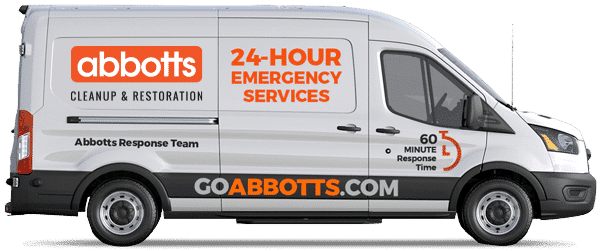ABBOTTS BLOG
What are the Categories of Water Damage?
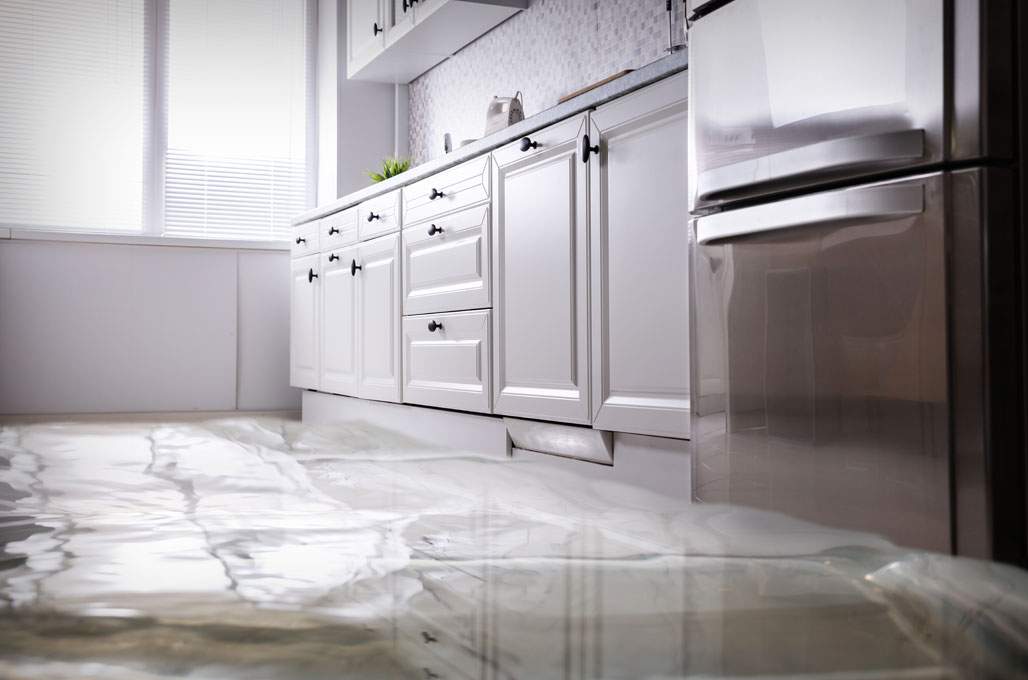
If you’re familiar with the disastrous impacts of water damage, you know that any water damage can be catastrophic, given the right combination of time, temperature, environment, and the lack of treatment. But did you know that the initial condition of the water also dictates the severity of the damage, as well as how it needs to be safely handled?
There are three categories of water that cause water damage. They are defined by the IICRC (Institute of Inspection Cleaning and Restoration Certification) as Category 1, Category 2, and Category 3. The IICRC also defines the proper methods of water damage remediation, based on the hazards presented by each category of water. Only IICRC-certified water remediation specialists are guaranteed to be able to safely restore your home or business to its pre-loss condition after water damage.
The 3 Categories of Water Damage
Category 1
 Category 1 water, also known as “clean water,” comes from a clean source. This water, before it comes into contact with outside bacteria and other matter, poses no health risk to humans or animals by exposure to skin, by inhaling air adjacent to the water, or through ingestion.
Category 1 water, also known as “clean water,” comes from a clean source. This water, before it comes into contact with outside bacteria and other matter, poses no health risk to humans or animals by exposure to skin, by inhaling air adjacent to the water, or through ingestion.
Category 1 water damage comes from sources like broken water supply lines, overflowing bathtubs or sinks, melting ice or snow, falling rain, and toilet tank overflows or leaks. The difference between category 1 and category 2 water, when it comes to sources within your home, is that category 1 water has not been used for anything yet. It is the clean water flowing into your dishwasher, as opposed to the unclean water draining from your dishwasher after use. It is water that should be safe to drink.
It is important to note that category 1 water can turn quickly into category 2 water upon exposure to other bacteria or contaminants, or as a result of the passage of time, which allows for the growth of mold and bacteria.
Category 2
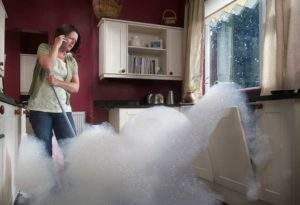 Category 2 water is also known as “grey water.” This water contains a moderate level of contamination, but the contamination is non-toxic. Exposure to or ingestion of grey water can cause discomfort or illness in humans and animals, and should be avoided.
Category 2 water is also known as “grey water.” This water contains a moderate level of contamination, but the contamination is non-toxic. Exposure to or ingestion of grey water can cause discomfort or illness in humans and animals, and should be avoided.
Sources of category 2 water damage include toilet overflow containing urine but no feces, dirty dishwasher or washing machine drainage, and sump pump failures. The key distinction between categories 2 and 3 is the type of material contaminating the water. Category 2 water contains no feces or other fungi, viruses, parasites, or bacteria which could lead to death due to exposure or consumption.
As with category 1 water, category 2 water can quickly escalate to category 3 water due to exposure to other materials, or because or the passage of time and growth of mold and bacteria.
Category 3
Finally, category 3 water is the highest-risk level of water contamination. This is also known as “black water.” It can cause serious illness or death to humans and animals as a result of exposure or consumption. Black water damage is highly unsanitary, and should only be dealt with by certified water remediation specialists. If you must handle black water, take extreme precautions.
Category 3 water damage comes from a variety of sources, including sewage or toilet overflow involving feces, flooding from rivers, streams, or seawater, and stagnant water that has become a breeding ground for mold and/or bacteria. Both categories 1 and 2 water can become category 3 water if left untreated.
Proper Water Remediation Procedures for Categories 1, 2, and 3 Water Damage
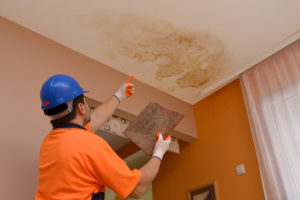 Any water damage must be handled properly, or it can result in leaving behind conditions leading to toxic mold growth and structural instability. The difference between handling categories 1-3 water damage lies in the amount of care you need to take to protect yourself while remediating the damage, as well as extra sanitation steps that must be taken throughout the process.
Any water damage must be handled properly, or it can result in leaving behind conditions leading to toxic mold growth and structural instability. The difference between handling categories 1-3 water damage lies in the amount of care you need to take to protect yourself while remediating the damage, as well as extra sanitation steps that must be taken throughout the process.
To properly mitigate category 1 water damage, you need, at minimum, to carefully follow the steps below, many of which we discuss in detail in other Abbotts blogs and YouTube videos.
Ensure a safe environment by evaluating electrical and other safety hazards. Turn off power to affected areas, or bring in an electrician if you cannot do so safely yourself. NEVER put yourself in a position where water and electricity might mix, as this can lead to severe injury and/or death.
1. Identify the source of flooding and address this problem.
2. Move furniture and other possessions out of harm’s way.
3. Extract water using an underwater sump pump, or a combination of buckets and mopping, depending on the severity of the flood.
4. Remove carpeting and carpet padding once water has been extracted and they are light enough to move.
5. Use air movers to dry the surfaces and air. Place air movers every 10-15 feet, and make sure they all face the same direction. This step can take days to weeks, depending on the severity and extent of the damage.
6. Dispose of porous water-logged items, such as items made of fabric and paper, if they can be replaced. If not, consult with a water damage restoration company such as Abbotts to determine whether the items can be restored, and the cost of doing so.
7. Dry and repair any water-damaged drywall. Drywall is a particularly sneaky breeding ground for mold, so this step is very important, and you may need professional assistance to determine what drywall should be cut out and what can be safely dried.
8. Clean and sanitize less porous items, such as those made of wood, if fewer than 48 hours have passed and the damage is not too extensive. You may also want to consult with professionals if the damage is beyond your ability to repair, or if you suspect mold has begun to grow.
9. Clean and sanitize non-porous materials, such as plastic and metal.
10. Reinstall carpet. You will need to dispose of the previous carpet pad and install a new one. If the carpet became moldy due to water damage, you should also discard this carpet and procure new carpeting. If you are not sure whether your carpet can be reinstalled, or your carpet was very expensive and you want to see whether it can be salvaged, contact a professional water remediation company for assistance.
11. Clean all affected surfaces once drying is complete.
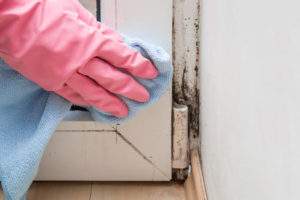 If you are dealing with category 2 or 3 water, you will need to apply a biocide to any water damaged surfaces after extracting the water, but before beginning the drying process. You should dispose of carpeting if there is any possibility of microbes, bacteria, fungus, or mold. You will also need to take extra sanitization steps throughout, and wear protective equipment.
If you are dealing with category 2 or 3 water, you will need to apply a biocide to any water damaged surfaces after extracting the water, but before beginning the drying process. You should dispose of carpeting if there is any possibility of microbes, bacteria, fungus, or mold. You will also need to take extra sanitization steps throughout, and wear protective equipment.
Because of the health risks presented by these categories of water damage, it is of particular importance to your health and that of your family that you make sure all contaminants are removed. We recommend bringing in a water damage and mold damage remediation company to help with this process. Such service is likely covered through your homeowner’s insurance, and a good water damage professional will work directly with your insurance company to figure out what is covered every step of the way.
Abbotts personnel have more than 65 years of combined experience dealing with water damage repair, sanitation, and remediation. We are here to licensed, certified, and insured, and guarantee that we will take all necessary steps to ensure a safe and thorough removal of water damage caused by categories 1, 2, and 3 water.
Contact us today for a free consultation. We are available 24/7 for emergency response, and will help you through every step of this process.

